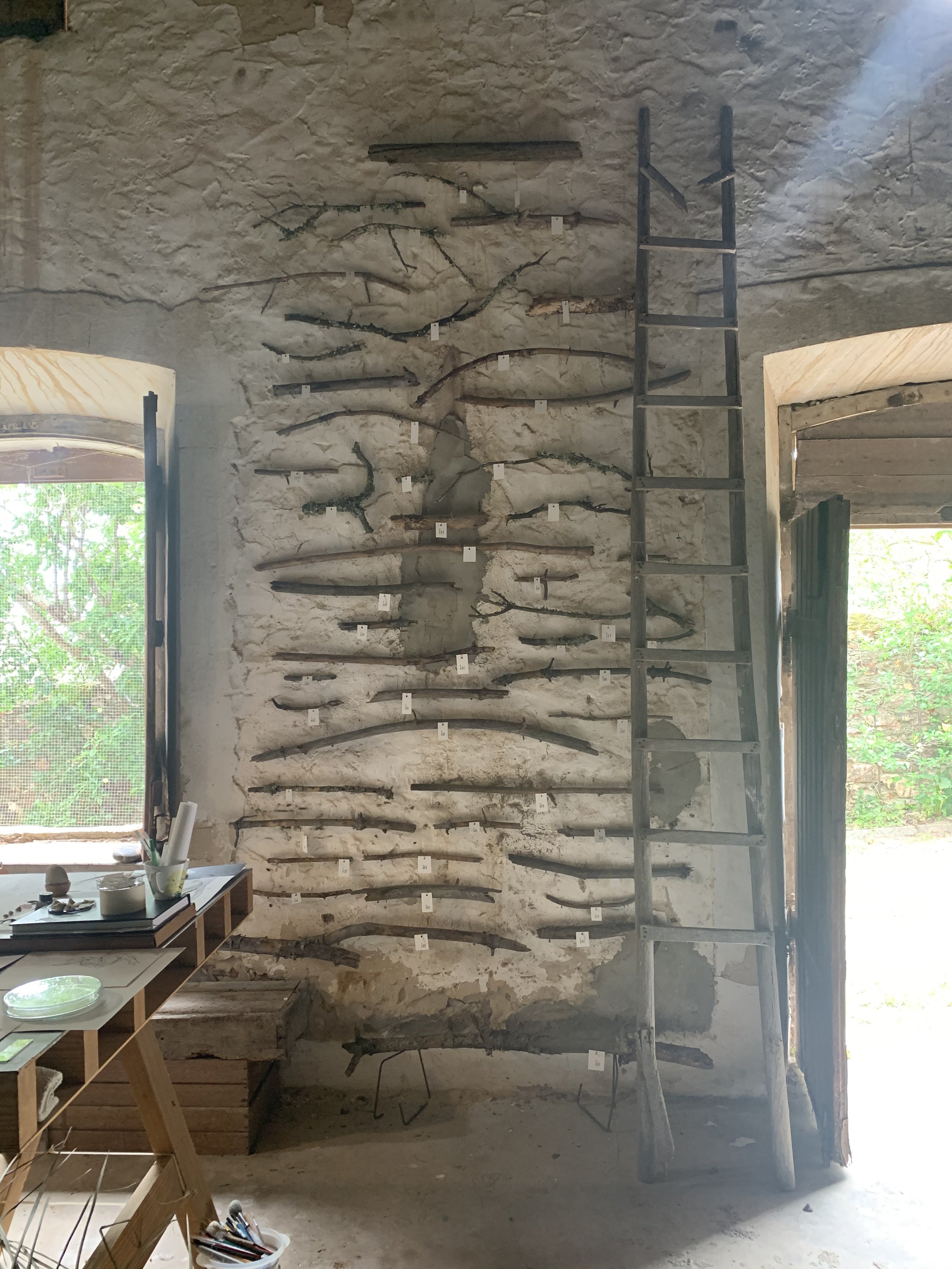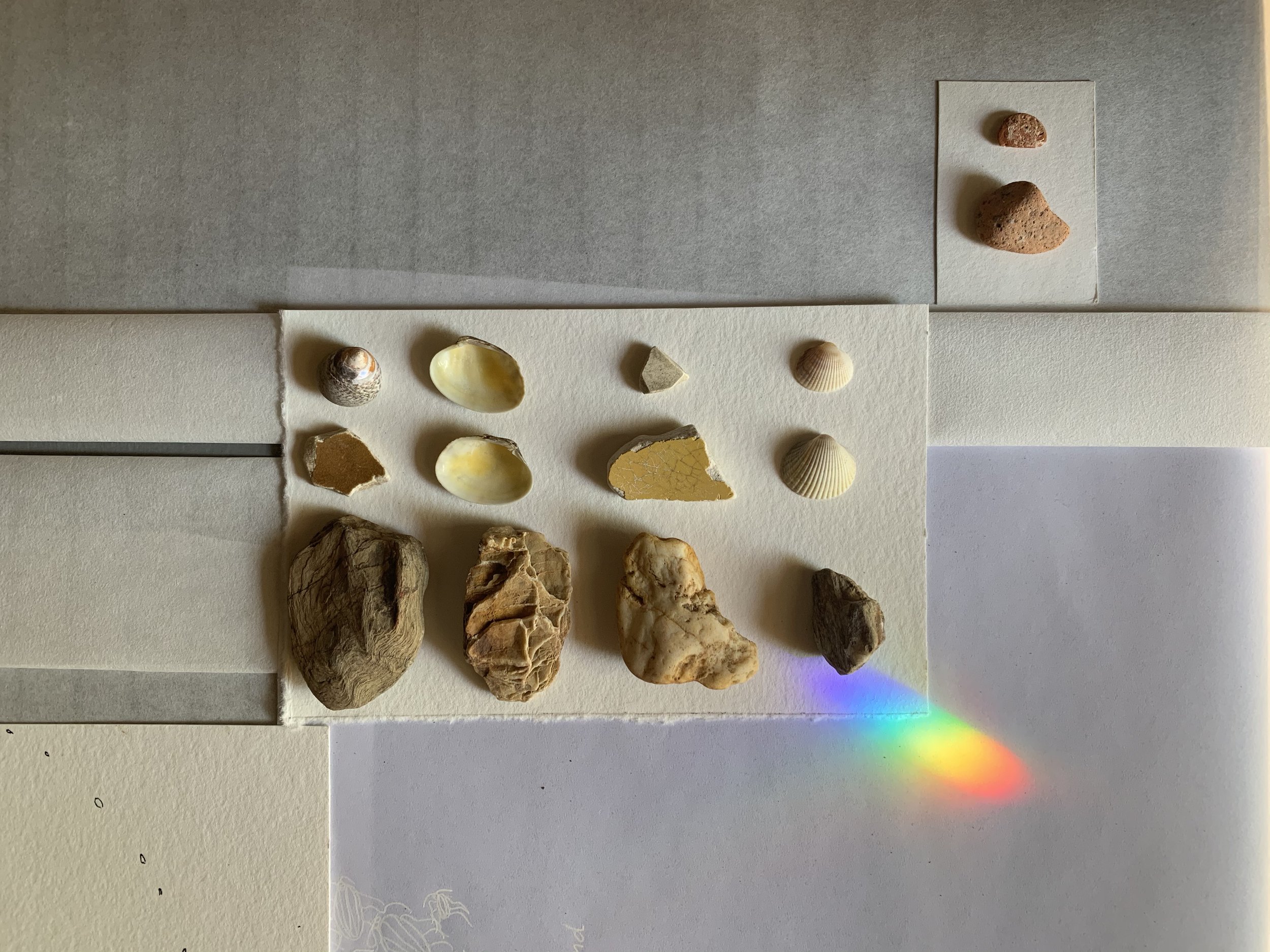CODEX | SPECULATIVE TRANSLATIONS IN BARK BEETLES
Ever since I was little, I would walk through the woods, gathering sticks that beetles carved and whisper back to the writings that I believed aliens or elves wrote to me. As I grew older, I couldn’t shake the feeling that the woods had something to say.
Beetles are thought to have evolved around 327 million years, ( in comparison humans evolved 5-7 million years ago) . A modern rove beetle has been dated back originating all the way to the Cretaceous period ( 145-65 million years ago ). What kind of knowledge does a creature that has roamed this earth for so long possess? Could the answers lie in the patterns they create?
This project began in 2017 and will include several phases that focus on the transcription and interpretation of beetle galleries (unique patterns beetles make underneath the bark of trees) into a pictographic language rich with myths, legends, and folklore. My hypothesis is that I will uncover patterns that will lead me closer to a potential awareness of inter-species communication. What I have begun uncovering through a variety of translation strategies, is an outside critique of humanity's role on Earth and the destructive similarities between beetle and man. The speculative translations will be documented in a multi-media codex that will contain chapters from areas where beetle galleries have been collected. CODEX will contain two major parts, a physical book and "library" and a website where the materials will be archived, animated, and presented in 3D digital design.
Beetle invasions are common in areas of significant rising temperatures due to climate change and in areas where the monoculture of trees for the purpose of profit are planted. This creates an imbalance in the forest and leads to poor nutrition of the soil, dryness, instability and forest fires. The stress of the trees is what initially, and most commonly attracts the beetles. The tree emits a signal that the beetle can sense when it is in distress and from there the beetle attracts others to help them finish the job. As we blame beetles for the destruction of our forests it is important to remember our catalyzing role, “Beetles do not start the process of death, they finish it.“ - Anne Sverdrup-Thygeson
Forests are marked with these warnings across the globe. Just like ancient human civilizations did years ago into stone, could beetles be carving their stories into wood?
The First TRANSLATIONS ———>
“As the salt cleared from Veri’s eyes she realized that the two swans were one. Connected at the wing, bound together by blood, the sisters hibernated in a nest protected by waves. A fog rolled in and the tall neck whipped down, her flame-like beak inches from Veri’s wingless abdomen… “
Excerpt from Finnish beetle galleries. Published by
Unformed Informed
OUT NOW
PHASE I: LIBRARY OF TRANSCRIPTIONS
Phase I of the project takes the form of a library; an installation where research, community involvement, language exploration and visual development of a living and breathing "codex" began. Permanently located in São Luis , Portugal, “Library of transcriptions and speculative translations of bark beetles.” includes, “The Table of Transcription”, “The Door of Interpretation”, “Pinning Observatory” , “Imprint Archive” “Blue Stain Fungus Studies” and the “Library of Galleries”.
MICRODOC About translation process at cultivamos cultura
PHASE II : Illumination study | Porch Lab












What does the beetle see?
Speculative beetle POV
Speculative beetle POV
Experimenting with AI
How would a computer speculatively translate bark beetle galleries?
The first translation that appeared after the AI pinpointed the mathematical markers of the “language” and compared the patterns in a database containing billions of images of other languages was “The Limit has been taken”. I was interested to see what a computer would generate with its incredibly fast processing speeds and comparative prowess. MIT has recently developed programs that can decode dead languages, and they are on to now trying to decipher whether or not we can understand what animals are saying. In a world where many of us feel threatened by AI, it could help us learn and relate again to ancient knowledge that we lost and that may be important. Who is to say we were not able to understand animals in the past? What could ancient civilizations have known that could help our understanding of relating to the world around us today? Perhaps AI could connect us as much as it has detached us.
Image of light box with isolated beetle gallery markings over the translations generated by the AI.
illuminated manuscripts of Rockingham Co. No. 2" Gilded log. 2022
Each of these galleries may contain patterns that have been repeated or created for the first time on earth. The beetles crawl under the bark and lay their eggs, often bringing with them food for the hatchlings to feast on in the form of fungus (symbiosis!) The beetles hatch and eat their way to adulthood in the formation of these galleries. Is there a reason for the specific way they bore into the wood? Professor of mathematical biology Vincent Jansen thinks so! Jansen has run extensive tests to figure out the rules the beetles follow and has concluded it is most likely due to the sound and vibrations of the other beetles crunching away. It certainly could be that, but is it possible it could be something else? Can we ever know for sure?
“CODEX | DECOMPOSERS, Transcriptions and AI translations of pine bark beetle galleries in São Luis, PT.” Gold ornamental frame, gold leaf beetle gallery and AI translation. 2022
Teacher of the Earth / Earth Worm / Mushroom / Pupa, Larvae, Egg
Humans are consumers. We depend on producers, herbivores, other consumers, and sometimes decomposers for nutrition and we can’t stop! This obsessive need for more has created monumental waste from our constantly growing consumptive wants (and sometimes needs!) And this has created more jobs than ever for the decomposers. We just don’t like where those jobs are going when they eat all our trees and our roses :(. And then we get pissed and freak out when the decomposers don’t want our waste. Why don’t they want to feast on our trash islands? The First AI TRANSLATION :: The limit has been taken.























































